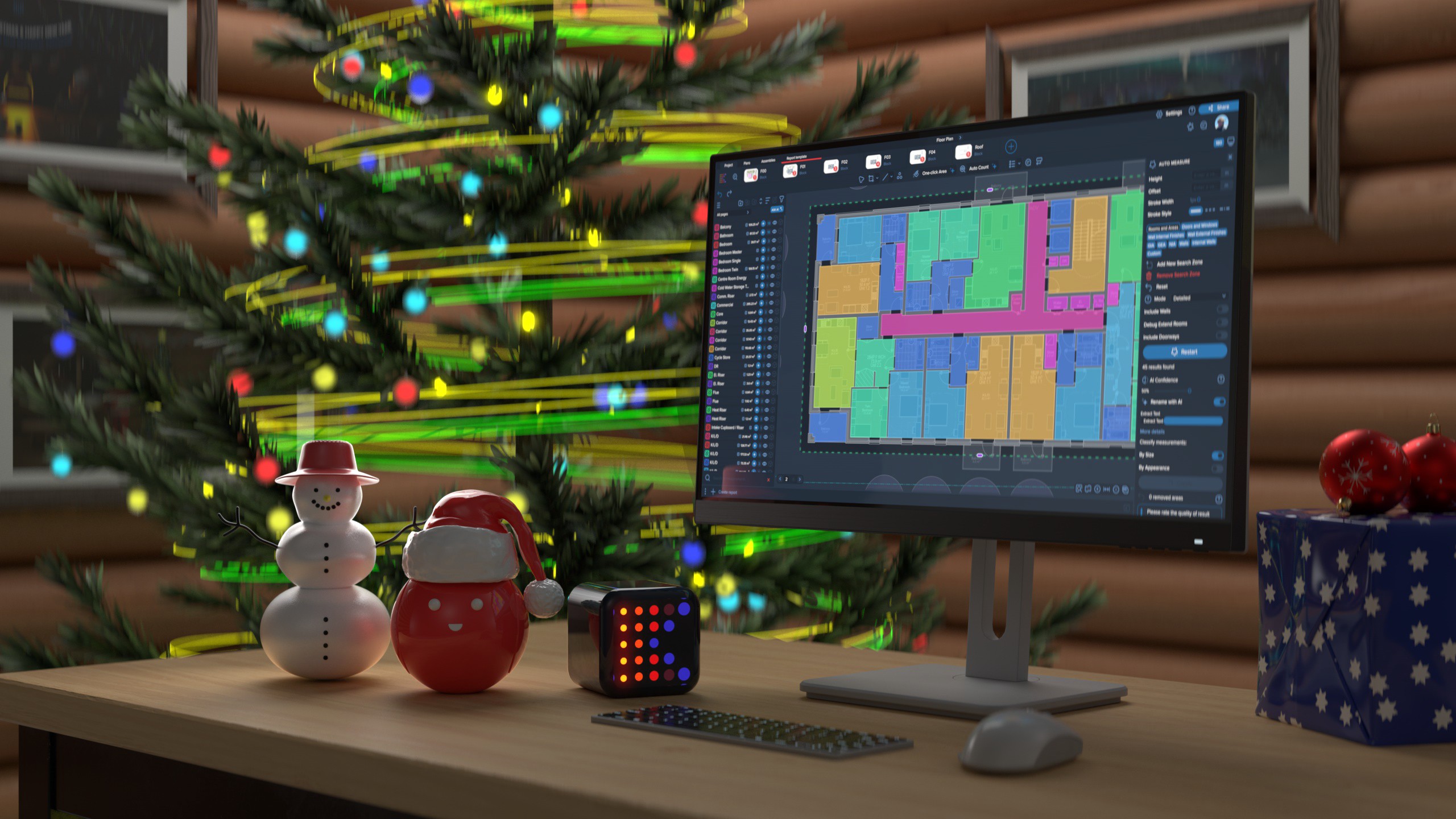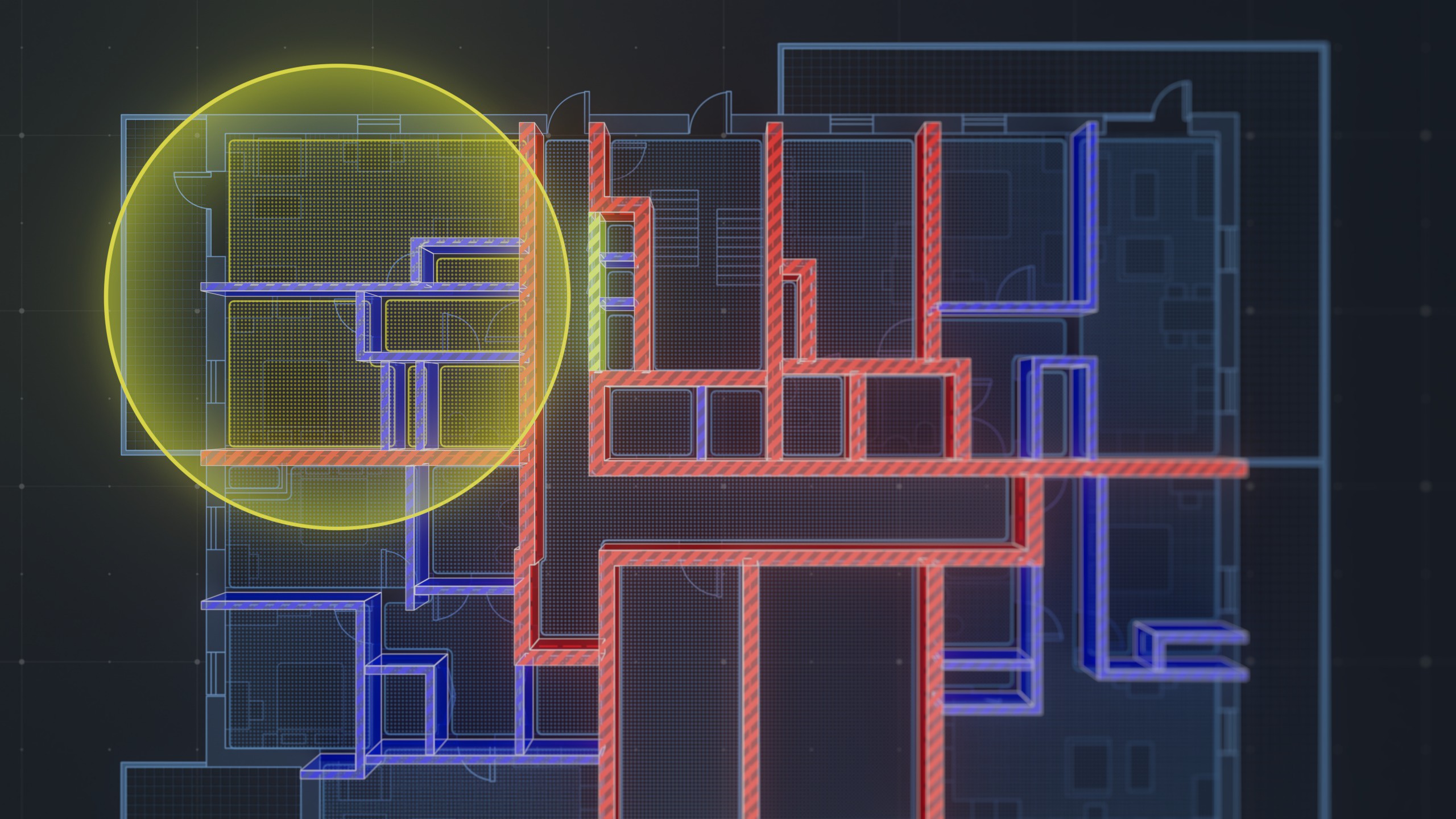In the dynamic realm of the construction industry, where innovation and precision converge, the role of Quantity Surveying stands as a linchpin in achieving successful project outcomes. Quantity Surveyors, often referred to as the financial architects of construction, play a pivotal role in navigating the intricate landscape of costs, budgets, and resources. Their expertise is indispensable, not only in estimating project expenses but also in ensuring that projects are executed within financial parameters.
Yet, this venerated profession has not been immune to the challenges that come with a constantly evolving construction landscape. The complexities of cost estimation, measurement discrepancies, and project disputes have historically presented hurdles that demand innovative solutions. Enter the Royal Institution of Chartered Surveyors (RICS) and its revolutionary offering: the New Rules of Measurement (NRM).
Transforming Tradition: The Role of RICS NRM
RICS NRM, a comprehensive framework introduced by the globally recognized RICS, marks a paradigm shift in the realm of Quantity Surveying. It's not merely a set of rules; it's a dynamic approach that seeks to redefine the profession's core methodologies. By standardizing measurement techniques, enhancing cost prediction accuracy, and streamlining dispute resolution processes, RICS NRM emerges as a catalyst for efficiency and accuracy in an industry that thrives on precision.
The Evolution of Quantity Surveying with RICS NRM
Historical Context and Challenges Faced by Practitioners
The roots of Quantity Surveying trace back to the early 17th century, emerging as a discipline focused on measuring and quantifying construction materials for accurate cost estimation. Over time, this role evolved to encompass a broader array of responsibilities, including project cost management, procurement, and contract administration. As the construction industry expanded in scope and complexity, so did the challenges faced by quantity surveyors.
In the pre-modern era, quantity surveyors encountered several significant challenges:
- Diverse Measurement Practices: There was no standardized approach to measurement, leading to inconsistencies and disagreements in project cost estimates.
- Manual Calculation: Quantity surveying heavily relied on manual calculations, which were prone to human errors and time-consuming.
- Lack of Transparency: Inaccurate measurements and varying methods often led to disputes between contractors, clients, and other stakeholders.
- Inefficiencies: The absence of standardized procedures and tools resulted in inefficiencies in cost estimation and project planning.
Emergence of RICS NRM as a Response
In response to the challenges faced by quantity surveyors and the changing demands of the construction industry, the Royal Institution of Chartered Surveyors (RICS) introduced the New Rules of Measurement (NRM). This framework was designed to address the shortcomings of traditional measurement practices and redefine the way quantity surveyors approached their tasks.
Key Principles and Objectives of RICS NRM
The introduction of RICS NRM marked a pivotal moment in the evolution of quantity surveying, guided by the following principles and objectives:
- Standardization: RICS NRM sought to establish a unified set of measurement rules and methodologies, ensuring consistency and comparability across projects.
- Accuracy and Precision: By providing detailed guidelines for measurement and cost estimation, NRM aimed to enhance the accuracy and precision of project cost forecasts.
- Transparency and Dispute Resolution: NRM aimed to mitigate disputes arising from measurement discrepancies by promoting transparent and standardized measurement practices.
- Efficiency: The framework aimed to streamline the measurement and cost estimation process, leading to improved efficiency in project planning and management.
- Adaptability: RICS NRM recognized the dynamic nature of the construction industry and encouraged flexibility in its application to accommodate various project types and technologies.
- Professional Development: NRM intended to serve as an educational resource, fostering continuous professional development within the quantity surveying community.
As we progress through this article, we will delve into the concrete impact of RICS NRM on the quantity surveying profession, showcasing real-world examples where the adoption of NRM principles has led to substantial improvements in project cost accuracy, dispute resolution, and overall project efficiency. The journey from historical challenges to the innovative response of RICS NRM underscores the profession's adaptability and commitment to elevating industry standards.
Understanding RICS NRM: NRM 1, NRM 2, and NRM 3
NRM 1: Order of Cost Estimating and Elemental Cost Planning
NRM 1, the first component of RICS NRM, serves as a comprehensive guide for Order of Cost Estimating and Elemental Cost Planning. Its primary objective is to establish a standardized framework that enables consistent and reliable cost estimation across various construction projects. By providing clear definitions, classifications, and rules for measurement, NRM 1 aims to eliminate ambiguity and variations in cost estimates. This standardization enhances transparency, facilitates accurate budgeting, and fosters effective communication among stakeholders.
NRM 1 has revolutionized the process of preparing cost estimates by offering a structured approach that aligns with industry best practices. The component categorizes costs into elemental components, making it easier to quantify and estimate costs for different parts of a project. This standardization streamlines the estimation process, allowing quantity surveyors and professionals to work from a common platform. For example, when estimating the cost of a residential project, NRM 1's predefined elemental classifications enable accurate and consistent calculations for components such as foundations, walls, and roofing.
NRM 2: Detailed Measurement for Building Works
NRM 2 represents the Detailed Measurement for Building Works and plays a crucial role in maintaining measurement consistency. It offers a comprehensive framework for quantifying building elements, enabling quantity surveyors to measure components accurately using a standardized approach. This uniform method prevents disparities and discrepancies in measurements, reducing the risk of disputes and errors that can impact project costs and schedules.
NRM 2's significance is best exemplified through real-world case studies. Consider a commercial construction project involving intricate architectural elements. By employing NRM 2, quantity surveyors can precisely measure features like façades, partitions, and finishes, leaving no room for interpretation or miscalculation. This precision ensures that both clients and contractors are on the same page regarding the scope of work, minimizing disagreements and contributing to smoother project execution.
NRM 3: Order of Cost Estimating and Elemental Cost Planning for Capital Building Works
NRM 3 specializes in Order of Cost Estimating and Elemental Cost Planning for Capital Building Works, focusing on major projects with significant financial implications. It is tailored to handle projects of higher complexity and broader scope, often associated with public infrastructure, commercial developments, and large-scale initiatives. NRM 3 recognizes the need for more detailed and intricate cost estimation methods to meet the demands of these capital projects.
NRM 3's value is evident in capital building projects where cost planning and decision-making are critical. Imagine a government-sponsored infrastructure project such as a new airport terminal. NRM 3's meticulous approach enables accurate budgeting for extensive elements like runways, terminals, and utilities. This precision empowers stakeholders to make informed decisions regarding funding allocation, resource management, and project timelines, leading to improved overall project governance.
As we delve deeper into the revolutionary impact of RICS NRM, these three components, NRM 1, NRM 2, and NRM 3, will emerge as cornerstones of transformation in the quantity surveying profession. Their integration exemplifies RICS NRM's commitment to accuracy, transparency, and efficiency across a diverse range of construction projects.
Impact on Project Cost Accuracy
The adoption of RICS NRM has ushered in a new era of project cost accuracy within the construction industry. By providing standardized measurement methods and comprehensive guidelines, NRM 1, NRM 2, and NRM 3 collectively address the historical challenges that plagued traditional cost estimation methods. This integration of precise measurement practices has significantly improved the accuracy of project cost predictions, mitigating the risks associated with budget overruns and unforeseen expenses.
Traditional cost estimation methods were fraught with challenges that hindered accurate project cost predictions:
- Inconsistent Measurement Techniques: Varying measurement techniques among quantity surveyors and construction professionals led to disparities in cost estimates.
- Subjectivity: Estimations based on subjective judgment rather than standardized rules often resulted in inaccurate projections.
- Lack of Transparency: Stakeholders struggled to decipher the basis of cost estimations, leading to mistrust and disputes.
- Complexity: Manual calculations and diverse unit measurement systems added complexity, increasing the likelihood of errors.
Real-World Examples of Enhanced Cost Predictions with RICS NRM
- Residential Housing Development (NRM 1): In a residential housing project, NRM 1's elemental cost planning enabled precise calculations for various components, such as foundations, walls, and roofs. This consistency ensured that both the client and the contractor had a clear understanding of the project's financial scope, reducing the chances of unforeseen expenses.
- Commercial Office Space Construction (NRM 2): Imagine a complex commercial office space with intricate interiors. NRM 2's detailed measurement guidelines allowed quantity surveyors to accurately quantify every element, from partitions to finishes. This resulted in a more accurate bill of quantities, minimizing discrepancies and facilitating smoother project execution.
- Government Infrastructure Project (NRM 3): For a large-scale infrastructure initiative like a transportation hub, NRM 3's order of cost estimating for capital projects ensured meticulous financial planning. Detailed elemental cost planning enabled stakeholders to allocate resources precisely for components like runways, terminals, and utilities, contributing to effective project governance.
The adoption of RICS NRM's components has not only standardized cost estimation but also improved the transparency and reliability of project cost projections. By eliminating subjectivity and inconsistencies, NRM has bolstered stakeholder confidence, reduced the likelihood of disputes, and ultimately contributed to more accurate financial planning throughout the construction process.
Enhanced Dispute Resolution
The introduction of RICS NRM has significantly improved dispute resolution in the construction industry. By standardizing measurement methods, particularly through NRM 2, it has tackled common causes of disputes and enhanced transparency, leading to more efficient conflict resolution.
Construction projects often face disputes due to:
- Measurement Inconsistencies: Varying measurement techniques lead to cost and quantity discrepancies.
- Scope Changes: Changes in project scope result in disputes over additional costs and delays.
- Incomplete Documentation: Unclear documentation causes misunderstandings about project requirements.
- Payment Issues: Ambiguity in payment schedules leads to conflicts over completed work.
Case Studies: NRM 2 in Dispute Resolution
- Cladding Dispute: NRM 2's guidelines resolved a cladding dispute by providing accurate measurements, clarifying costs.
- Interior Fit-Out: NRM 2 facilitated an interior fit-out dispute resolution by ensuring consistent measurements.
- Structural Elements: NRM 2 quantification resolved a structural element dispute, aiding transparent discussions.
These case studies highlight how NRM 2's standardized methods establish clarity, mitigate disputes, and accelerate resolutions. NRM's contribution to standardized measurement practices promotes smoother interactions and more harmonious construction processes.
Efficiency Gains in Project Execution
The integration of RICS NRM has brought about significant enhancements in the overall efficiency of project execution within the construction industry. By replacing manual measurement methods with standardized digital practices, NRM has addressed inherent inefficiencies and streamlined various project phases, resulting in smoother execution and reduced delays.
Manual measurement methods have long been plagued by inefficiencies that hinder project execution:
- Time-Consuming: Manual calculations and measurements are time-consuming and can lead to project delays.
- Error-Prone: Manual methods are susceptible to human errors, leading to inaccuracies in cost estimation and project planning.
- Lack of Consistency: Different surveyors using varied methods can result in inconsistencies and difficulties in comparing project data.
- Limited Scalability: Manual processes are less adaptable to large-scale or complex projects, where precise and uniform measurement is crucial.
Examples of Projects with Improved Efficiency due to NRM Adoption
- Residential Development Project: By adopting NRM's standardized measurement methods, a residential project significantly expedited the process of generating accurate cost estimates. NRM's structured approach ensured uniformity in measurements, reducing calculation time and minimizing errors. This efficiency improvement led to a faster project initiation and reduced the risk of budget overruns.
- Commercial Complex Construction: In a large-scale commercial development, NRM's integration revolutionized the measurement and cost estimation process. Accurate quantification of components using NRM 2 allowed the project team to swiftly prepare detailed bills of quantities, expediting procurement and enabling contractors to work from a consistent foundation. This approach led to improved project coordination and timely completion.
- Public Infrastructure Initiative: The adoption of NRM 3's detailed cost planning for a government infrastructure project streamlined decision-making. Precise quantification facilitated robust budget allocation, resource planning, and risk assessment. The efficiency gained through NRM adoption ensured that the project adhered to timelines and avoided unnecessary delays.
These examples illustrate how RICS NRM's digitized and standardized measurement practices have optimized project execution. By eliminating manual inefficiencies, NRM has accelerated processes, reduced discrepancies, and contributed to a more seamless construction journey. The transition to digital precision has translated into improved project timelines, resource management, and overall operational efficiency.
Future Prospects and Industry Transformation
Looking forward, the influence of RICS NRM on the quantity surveying profession is poised to continue its transformative journey. The framework has laid a solid foundation for the future of measurement standards, with the potential for further advancements:
- Integration of Environmental Factors: Future measurement standards could incorporate environmental considerations, aligning with sustainable construction practices and ensuring accurate cost estimation for eco-friendly materials and designs.
- Global Harmonization: The globalization of construction demands standardized measurement practices across borders. NRM's principles could evolve to create a global benchmark, facilitating seamless communication and collaboration in an increasingly interconnected industry.
Technology stands as a catalyst in further optimizing the utilization of NRM principles:
- BIM Integration: Building Information Modeling (BIM) can seamlessly integrate with NRM, creating a dynamic digital environment where measurements, cost estimations, and project planning coexist. This synergy ensures real-time accuracy and facilitates data-driven decision-making.
- Automated Measurement Tools: Artificial Intelligence-powered tools could automate measurements, reducing human error and saving time. These tools would adhere to NRM guidelines, ensuring standardized and accurate quantification.
- Data Analytics for Predictive Insights: Technology-driven data analytics could anticipate cost trends and potential discrepancies based on historical data, enhancing project cost accuracy and preventing potential disputes.
- Blockchain for Transparency: Blockchain technology could be leveraged to ensure transparency in measurement and cost data. Immutable records could reduce disputes and disputes by offering a trustworthy source of information.
As the construction industry evolves and embraces digital transformation, the symbiotic relationship between RICS NRM and technology will shape the future of quantity surveying. This evolution promises not only increased efficiency and accuracy but also a broader vision of sustainability, global collaboration, and innovation that paves the way for a dynamic and resilient construction landscape.
Conclusion
RICS NRM's emergence has revolutionized quantity surveying, reshaping the construction landscape. Through NRM 1, NRM 2, and NRM 3, standardized measurement methods have offered transformative benefits.
- Enhanced Accuracy: Cost predictions are now remarkably precise, preventing budget overruns and financial uncertainties.
- Efficient Conflict Resolution: Uniform measurement practices expedite dispute resolution and facilitate stakeholder interactions.
- Streamlined Efficiency: NRM's integration minimizes delays and inefficiencies tied to manual measurements.
RICS NRM exemplifies construction's adaptability. Its adoption isn't just about precise estimations; it signifies the industry's embrace of innovation for a future of precision, transparency, and collaboration. By investing in methodologies like RICS NRM, the construction sector builds not only structures but also a new era of accuracy, efficiency, and transformation. The industry's progress hinges on such innovations, reinforcing its commitment to excellence and future growth.




.png)